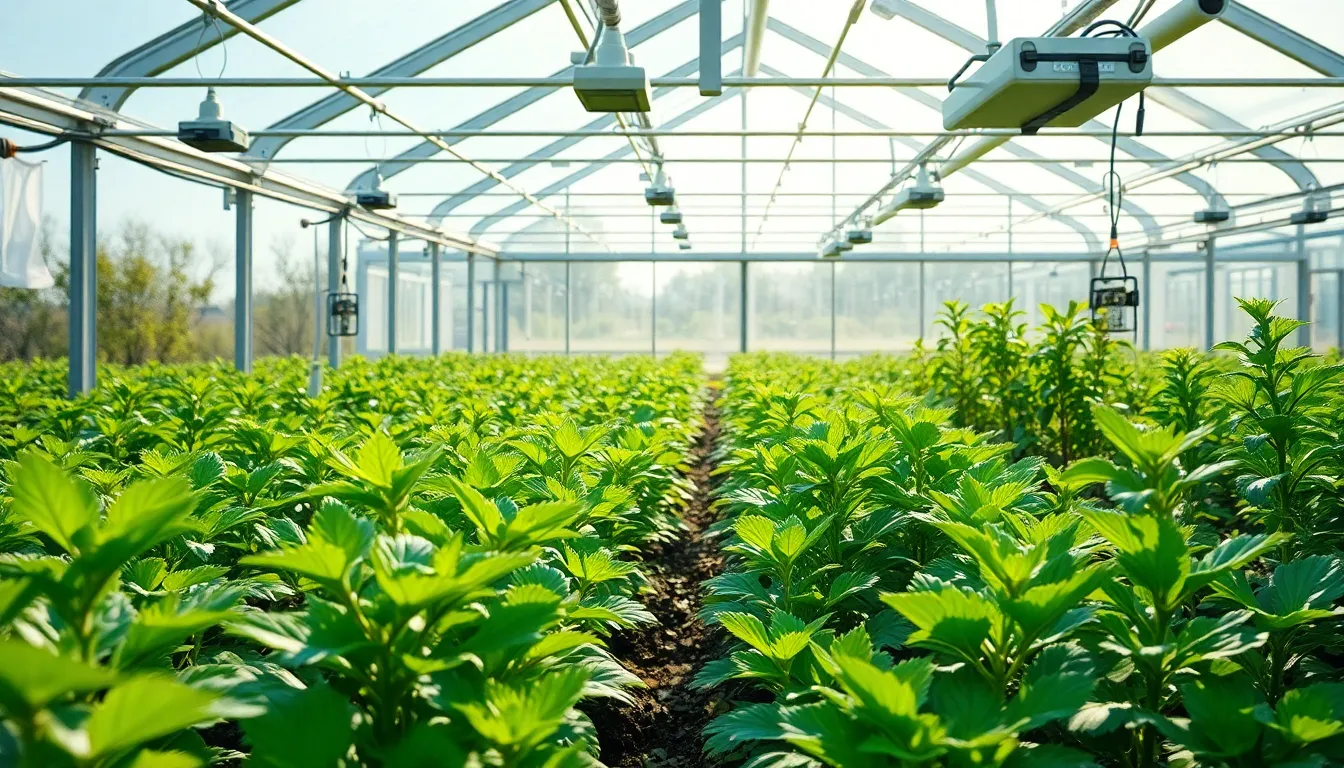Imagine a world where plants thrive not just on sunlight and water but also on a sprinkle of technology. Enter IoT greenhouse control, the superhero of modern agriculture. With sensors that could make even the most stubborn plants perk up, this tech marvel transforms traditional farming into a smart, efficient operation.
Table of Contents
ToggleOverview of IoT Greenhouse Control
IoT greenhouse control utilizes advanced technology to monitor and manage various environmental factors. Sensors track temperature, humidity, soil moisture, and light levels, providing real-time data that informs decisions. Automation plays a critical role, allowing systems to adjust conditions automatically, ensuring optimal growing environments.
Microcontrollers process the data collected by sensors. They enable growers to respond swiftly to changes, whether adjusting ventilation or irrigation systems. Protocols like MQTT facilitate communication between devices, allowing for efficient monitoring and control from remote locations.
Data analytics contributes significantly to decision-making. Analyzing trends helps identify optimal planting schedules and potential problems before they escalate. With machine learning algorithms, systems adapt to environmental changes, improving plant health and yield over time.
Integration with mobile applications offers growers user-friendly interfaces. Growers can receive alerts, access reports, and modify settings directly from their smartphones or tablets. This convenience supports effective management without the need to be physically present in the greenhouse.
Sustainability emerges as another essential aspect. Efficient resource usage means reduced water consumption and less energy waste. IoT systems empower growers to implement eco-friendly practices while maintaining profitability.
IoT greenhouse control represents a significant advancement in agricultural techniques. Enhanced monitoring, responsive automation, and data-driven insights combine to create a highly efficient and sustainable farming approach. Through these technologies, modern agriculture can meet increasing global food demands while minimizing environmental impact.
Benefits of IoT Greenhouse Control
IoT greenhouse control presents numerous advantages that contribute to efficient agriculture.
Improved Crop Yield
Precision in monitoring environmental conditions leads to enhanced plant growth. Data from sensors enables immediate adjustments to temperature and humidity, which optimizes the growing environment. Regular monitoring allows for timely identification of potential issues like diseases or pest infestations. Decision-making becomes data-driven, allowing growers to implement corrective measures swiftly. Automated systems reduce human error, ensuring consistent plant health. The result is a notable increase in crop yield, supporting food production to meet increasing demand.
Resource Efficiency
Resource management improves significantly with IoT technology. Sensors track water usage, allowing growers to tailor irrigation schedules precisely, minimizing waste. Less energy consumption occurs through automation of lighting and heating systems based on real-time data. Growers can efficiently manage inputs like fertilizers, applying only as needed to reduce excess runoff. Predictive analytics facilitate smarter use of resources over time, contributing to sustainability efforts. Investments in these technologies yield long-term savings, benefitting both the environment and grower’s bottom line.
Key Technologies Behind IoT Greenhouse Control
IoT greenhouse control relies on several key technologies to optimize agricultural efficiency. Understanding these technologies sheds light on their impact on modern farming practices.
Sensors and Data Collection
Sensors form the backbone of IoT greenhouse control. These devices monitor critical environmental factors such as temperature, humidity, soil moisture, and light levels. By providing real-time data, sensors enable immediate responses to changing conditions. Advanced sensors also offer integration with cloud platforms for enhanced data storage and analysis. This capability assists growers in tracking performance trends over time. Wireless technology paired with sensors ensures seamless communication between devices. Effective data collection helps in making informed decisions about resource allocation and crop management.
Automation Systems
Automation systems play a crucial role in IoT greenhouse control. By integrating microcontrollers and software algorithms, these systems adjust environmental parameters automatically. Components like automated irrigation and climate control contribute to maintaining ideal growing conditions. Sensors send alerts to automation systems when specific thresholds are met, allowing for timely interventions. The convenience of automation minimizes labor requirements while maximizing efficiency. Additionally, cloud connectivity supports remote monitoring and control through mobile applications. This accessibility enables growers to manage their greenhouse from anywhere, ensuring optimal performance even when they are away.
Challenges in Implementing IoT Greenhouse Control
Implementing IoT greenhouse control presents several challenges. Identifying these issues ensures smoother integration and operation.
Network Connectivity Issues
Network connectivity remains a significant challenge in IoT greenhouse environments. Unstable internet connections can disrupt data transmission from sensors to cloud platforms, leading to delayed responses. Loss of connectivity impacts real-time monitoring and automation, essential for maintaining optimal growing conditions. Additionally, remote locations may experience limited access to reliable networks. Strengthening network infrastructure, including the use of mesh systems, enhances connectivity and reliability. Overall, addressing connectivity issues proves crucial for effective IoT integration.
Data Security Concerns
Data security represents another critical challenge in IoT greenhouse control. Vulnerabilities in connected devices may expose sensitive information to cyber threats. Growers must prioritize implementing robust security measures, including encryption and secure authentication protocols. As data breaches can lead to unauthorized access and operational disruptions, maintaining a secure environment is vital. Regular software updates and adherence to best practices also contribute to minimizing security risks. By fortifying data security, growers can protect their operations and ensure consistent performance.
Future Trends in IoT Greenhouse Control
Innovations in IoT greenhouse control continue to shape the future of agriculture. Key trends focus on technology integration and sustainable practices.
Integration with Artificial Intelligence
Artificial intelligence enhances IoT systems by enabling predictive analytics. Algorithms analyze vast amounts of data to optimize environmental conditions, which improves decision-making. Advanced AI techniques help identify plant diseases early, allowing for timely interventions. Machine learning models adapt to growing patterns, refining care regimens. Enhanced automation systems respond intelligently to real-time data, drastically reducing labor demands. AI further personalizes settings, catering specifically to each plant’s needs for better outcomes.
Sustainable Practices
Sustainable practices play a central role in modern IoT greenhouse control. Efficient water management systems track moisture levels accurately, reducing unnecessary usage. Smart irrigation schedules utilize weather forecasts to further minimize water waste. Energy-efficient lighting technologies complement environmental monitoring, lowering operational costs. Growers adopting renewable energy sources like solar power significantly bolster sustainability efforts. Integrating eco-friendly materials in greenhouse construction also contributes to reduced environmental impact, fostering a long-lasting focus on responsible cultivation.
Conclusion
Embracing IoT greenhouse control is a game changer for modern agriculture. By leveraging advanced technology growers can optimize conditions for plant growth while ensuring sustainable practices. The integration of sensors and automation not only enhances efficiency but also empowers farmers to make informed decisions based on real-time data.
As the agricultural landscape evolves the potential for IoT solutions continues to grow. Future advancements promise even greater benefits through AI and predictive analytics. This evolution paves the way for increased crop yields and reduced environmental impact. Adopting IoT greenhouse control is not just about improving productivity; it’s about fostering a more sustainable future for agriculture.




